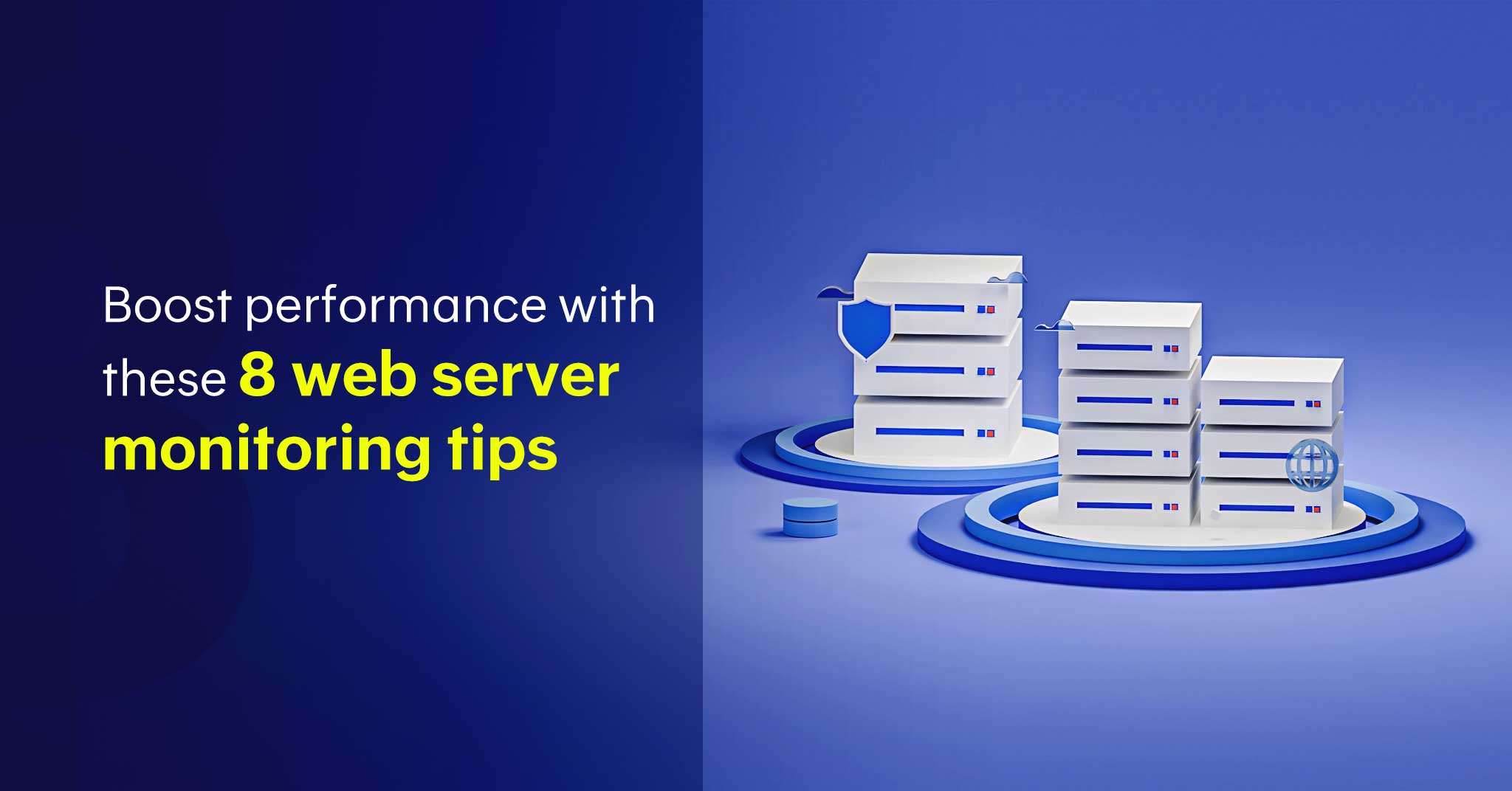Top 8 web server monitoring best practices

In this blog, we'll explore the best practices for monitoring web servers such Apache, NGINX, IIS, Tomcat, and more.
1. Track key metrics
Starting with the basics, it's important to track uptime to check if your server is even online. Be sure to check response time, too, as this directly contributes to a user’s first impression—slow loads, like a laging IIS response or Tomcat servlet delay, drive people away.
Other key metrics include CPU, memory, and disk usage to determine when your server is under strain. Note that Apache’s threads or NGINX’s workers can max out differently. Tracing traffic and bandwidth can reveal request patterns and error rates. For instance, a 503 error in NGINX indicates the server is temporarily overloaded or an upstream service (like PHP-FPM) cannot respond, often due to resource limits or maintenance. Tracking these errors helps you pinpoint and fix issues before they snowball.
2. Choose a comprehensive monitoring tool
When it comes to comprehensive web server monitoring, Site24x7 is a smart choice. While open source options are great for customizing, Site24x7 brings a robust, all-in-one experience that connects into most web servers seamlessly, like Apache’s mod_status, IIS logs, or Tomcat’s JVM stats—without the hassle of doing it yourself. It also features real-time alerts, custom dashboards, and the ability to scale as your setup grows. Whether you’re tracking uptime on a small blog or juggling a complex app stack, Site24x7 molds to your needs and budget.
3. Set up alerts and thresholds
Alerts are your early warning system. Configure them for metrics like CPU spikes, downtime, or even security red flags like failed login attempts. Setting thresholds helps to catch issues, too. For example, a 503 error can signal an overloaded NGINX and addressing this can prevent your site from crashing.
Smart alerts keep you from being buried in noise, so be sure to configure them to match your server’s baselines and prevent alert fatigue. Site24x7 allows you to set priority levels so that you can quickly discern between a total outage or a brief lag on your website.
4. Regularly analyze logs
Logs are your server’s diary—don't be afraid to crack them open. Site24x7's log management helps you spot patterns fast, whether it’s IIS 500s or Apache memory leaks. Centralized log monitoring helps you save time when you’re troubleshooting. For example, an Apache access log might show multiple 404 errors, hinting at broken links. NGINX logs could reveal 2025/03/05 14:32:15 [error] 12345#0: *678 upstream timed out (110: Connection timed out) tied to a 503 spike and pointing to an upstream bottleneck. Regular reviews of logs turn raw data into action, so you can catch trouble before your users do.
5. Monitor server resource utilization
Tracking resource utilization ensures efficient resource allocation, preventing over-provisioning, strain, or shortages. To ensure this, keep an eye on metrics like CPU, memory, and disk usage. Their overuse can crash servers fast. Apache’s threads might hog RAM, while NGINX’s workers use up CPU. Site24x7 helps you track all of these metrics with its Apache monitoring and NGINX monitoring capabilities. Set threshold limits, like capping disk at 90%, to be alerted in time and avoid surprises. If usage increases, ensure you scale your instances manually or through auto-scaling.
6. Implement load balancing and failover strategies
If your website receives high traffic, a single server may struggle to handle all the requests. Load balancers distribute traffic across multiple servers, ensuring stability. NGINX can double as one, distributing requests so no single node buckles under pressure. Combine that with failover setups: if a primary server (for example, running LiteSpeed) drops, a backup kicks in. Site24x7 can monitor both instances, alerting you if a failover triggers or load spikes unevenly.
7. Keep software and security patches updated
Outdated software is a major security risk. Regularly updating your OS, web server software (like Apache, Nginx, IIS), and security patches prevents vulnerabilities that hackers may exploit. Automating patch management will ensure timely updates and keep your web server secure.
8. Perform synthetic and real-user monitoring
Test how your web server affects the user experience. Synthetic monitoring mimics clicks and page loads, catching slow spots like a lagging Apache response. Meanwhile, real user monitoring tracks actual visitor data, such as instances where users are dropping off. Combining both in Site24x7 offers a robust solution for fixing experience issues.
Keep your web servers performing smoothly with Site24x7
Web server monitoring may not be exciting, but it's essential. When a server goes down—whether it's Apache struggling, NGINX freezing, or IIS failing—it can quickly damage your uptime and reputation.
Site24x7 offers web server monitoring for all major services like Apache , NGINX , Tomcat , IIS , LiteSpeed , and more. You can set up threshold-based alerts, custom dashboards, as well as view anomalies compared to seasonal performance levels. Sign up for a free trial today.